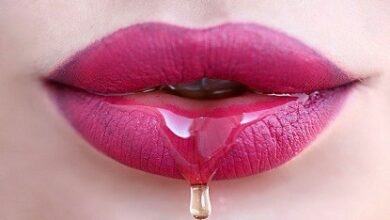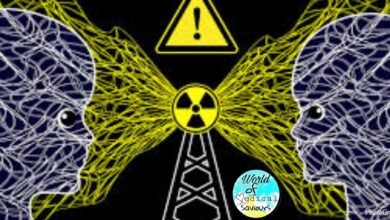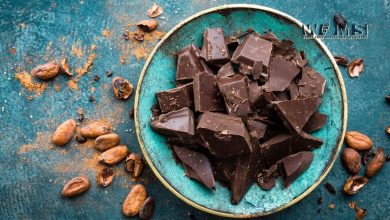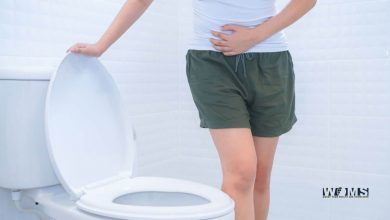What is normal blood pressure?
Everybody has blood pressure, so, know your numbers, understand when it's healthy and when it's not, Align signs with high, low or normal BP to help your DOC take care of you.
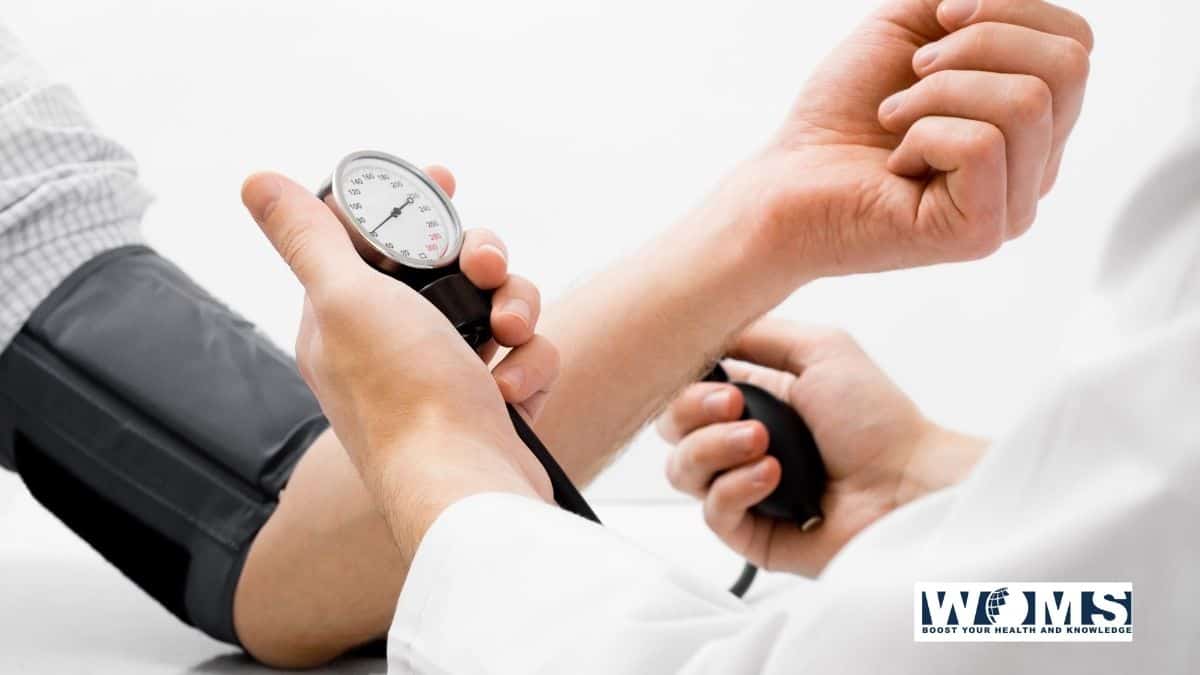
What is blood pressure?
Blood pressure is the lateral pressure exerted by the column of blood on the vessel walls while following through it. In this article, we will gain an idea about, “what is normal blood pressure, how it is measured and the detail about the blood pressure chart.
BP=CO×TRP
BP is a measure of the influence that the circulating blood exerts against the arterial walls. Systolic BP is the maximal pressure that occurs during ventricular contraction (systole). During ventricular filling (diastole), arterial pressure gets maintained at a lower level by the elasticity and compliance of the vessel wall. The bottom value (diastolic BP) occurs immediately before the next cycle.
BP is usually measured using a sphygmomanometer. In certain conditions, such as the intensive care unit, it is measured invasively using an indwelling intra-arterial catheter connected to a pressure sensor.
Blood pressure is measured in mmHg (millimeter of mercury) and recorded as systolic pressure/diastolic pressure, substantial with where, and how the reading is is taken, e.g., BP: 146/92 mmHg, right arm, supine.
BP is a valuable guide to cardiovascular risk and provides vital advice on the hemodynamic condition of acutely diseased injured patients. BP continuously varies and rises with stress, excitement, and the environment. ‘White-coat hypertension’ is only found in patients only when a patient is seeing a healthcare worker. Ambulatory BP measurement, using a portable device at intervals during regular daytime activity and at night, is better at determining cardiovascular risk.
Normal blood pressure
Normal BP: 120/80 mmHg (in young adult)
Lateral Pressure: It is the pressure at which the force is exerted at the right angle (900) to the circulating fluid within a vessel or tube.]

Types of BP: 4 types
| No | Type | Definition | Normal value
(mmHg) |
Significance |
| 1 | Systolic
Pressure (SP) |
It is the maximum pressure during systole of the heart | 110-140
(Av: 120) |
1.The height of Systolic Pressure indicates- a. The extent of work done by heart b. The force with which the heart is working. (It depends on Cardiac Output) |
| 2 | Diastolic
Pressure (DP) |
It is the minimum pressure during diastole of the heart | 60-90
(Av: 80) |
Undergoes much fewer fluctuations & remains with a limited range- 1. Diastolic Pressure is the measurement of Peripheral resistance
2. It indicates the constant load against which the heart has to work. 3. ↑Diastolic Pressure indicates that the heart is approaching failure. (It depends on TPR) |
| 3 | Pulse
Pressure (PP) |
It is the difference between SP & DP | 35-45
(Av: 40) |
1. It indicates the Cardiac Output. In heart failure, Cardiac Output↓, so SP↓ and therefore PP↓.
2. The strength of the pulse is determined by the pulse pressure. |
| 4 | Mean
Pressure (MP) |
It is the average pressure throughout the cardiac cycle | 86-96 | 1. For adequate Tissue perfusion.
2. If Mean Pressure is > 110 mmHg, then it indicates “Hypertension” [\MP=DP+1/3PP] |
Factors that Influence/Control/ Regulate BP:
| No | Factors | Short description |
| 1 | Cardiac Output | Cardiac Output depends on:
1. BP 2. Venous Return (VR) 3. The force of Contraction of the Heart (FCH). 4. Frequency of Heart Rate |
| 2 | Total Peripheral Resistance | TPR depends on:-
* Directly proportional to: 1. Velocity of blood 2. Viscosity of blood * Inversely proportional to: 1. The elasticity of arterial walls 2. The lumen of the blood vessels |
- Pumping action of the heart
- Elasticity of the arterial walls
- Blood volume
- The viscosity of the blood.
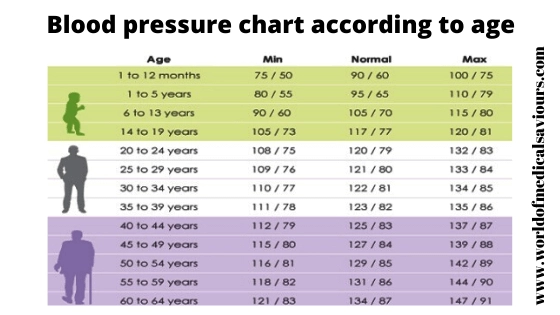
Factors affecting BP:
| No | Factors | Short description | |||||||||||||||
| 1 | Age | Increase BP with increasing age.
BP at different ages (Systolic)
|
|||||||||||||||
| 2 | Sex | In female both systolic pressure & diastolic pressure is slightly(10%) < Male after 45-50 years. | |||||||||||||||
| 3 | Body built | Obese persons have slightly higher systolic pressure. | |||||||||||||||
| 4 | Exercise | In strenuous exercise, systolic pressure ↑up to 180 mmHg & diastolic pressure ↓ In moderate exercise systolic pressure slightly ↑ but diastolic pressure remains unchanged | |||||||||||||||
| 5 | Sleep | Systolic pressure ↓ about 15-20 mmHg during sleep | |||||||||||||||
| 6 | Posture | In standing diastolic pressure is slightly higher & systolic pressure is lower. The condition is reversed is a recumbent position. | |||||||||||||||
| 7 | Emotion | Emotion & excitement ↑ systolic pressure | |||||||||||||||
| 8 | Digestion | During digestion, BP ↑ due to ↑Cardiac output | |||||||||||||||
| 9 | Respiration | ↓Venous return to the left ventricle ®↓Cardiac output ®↓BP. |
BP controlling Mechanism has divided into three groups.
Those that respond within “Short time”: (second or minute)
- Baroreceptor feedback mechanism.
- Chemoreceptor mechanism
- Central nervous system (CNS) ischemic response
Those that respond within “Intermediate time” period: (minute or hours):
- Renin-angiotensin vaso-constrictor mechanism
- The capillary fluid shift mechanism
- Stress relaxation changes in vasculature
Those that provide “Long times” regulation (hours or day):
- Renin-angiotensin vaso-constrictor mechanism with Aldosterone.
- Renal body fluid mechanism
Baroreceptor:
Def: Baroreceptors are spray-type nerve endings located in the wall of large arteries. Baroreceptor gets stimulated when they stretched.
Site: They are incredibly abundant in- Carotid sinus & Aortic arch
- Carotid sinus: The wall of each internal carotid artery just above the carotid bifurcation
- Aortic arch: The wall of the aortic arch.
Mechanism:
When the arterial pressure/BP increases, the baroreceptors are stimulated. The signals get transmitted to the carotid sinus through the small Herings nerve. Then to the Glossopharyngeal nerves. Then to the nucleus “Tractus solitaries” in the medullary area of the brain stem.
Signals from the “aortic baroreceptors” in the arch of the aorta gets transmitted through this vagus nerve. Also, to the same “Tractus solitaries” of the medulla. Where secondary signals inhibit the vaso-constrictor, the center of the medulla, and excite the vagal parasympathetic center.
The net effects-
- Vasodilatation of the veins & arterioles throughout the peripheral circulatory system.
- Decrease heart rate via the sympathetic nerve & strength of heart contraction
Therefore, agitation of the baroreceptors by formidable pressure in the arteries reflexly causes the arterial pressure to abatement because of both a decrease in total peripheral resistance & decrease cardiac output. Conversely, low pressure has opposite effects, reflexively causing the strength to rise back towards normal.
The baroreceptor mechanism is called a pressure buffer mechanism. Because of the baroreceptor system opposite, either increase or decrease in arterial pressure. The nerves from the baroreceptor are called buffer nerves.
Chemoreceptors are chemosensitive cells sensitive to 02 lack, excess C02 & H+ ion.
Site: Baroreceptor gets situated in several small chemoreceptor organs.
- Two carotid bodies, one of which belongs in the bifurcation of each common carotid artery.
- Usually, 1-3 aortic bodies adjacent to the aorta.
Regulation of BP by Chemoreceptor Mechanism:
Mechanism: Each of the carotid & aortic body gets endowed with abundant blood flow through a small nutrient artery, so the chemoreceptors are always in close contact with arterial blood.
Whenever the arterial BP falls below a climacteric level, the chemoreceptors become stimulated because diminished blood flow causes decreased 02 as well as the excess build-up of C02 & H+ ions that are not removed by slow blood flow.
Signals pass from the carotid bodies through the small Herings nerve to the glossopharyngeal nerves and then to the vasomotor center. And messages from the aortic bodies through the vagus nerve to the vasomotor center and this elevates the arterial pressure back towards normal.
The Chemoreceptors will not stimulate until the Mean Arterial Pressure (MAP) falls below 80 mmHg.
Examination sequence
- Have a patient sit for 5-10 minutes before obtaining the measurements.
- Place a BP cuff and inflate the bp cuff.
- Decrease the cuff pressure until sounds are heard only on expiration. Note the reading.
- Decrease the cuff pressure again until sounds get heard throughout the respiratory cycle; again note the reading.
- A difference >10 mmHg on inspiration is pulsus paradoxus.
Factors that affect blood pressure
- Many things change your blood pressure. These tend to cause increased readings:
- The three “s”-stress, smoking and sleep apnea increases blood pressure.
- Genetics history and family history-high blood pressure and heart disease often run in families.
- Chronic kidney disease-Damaged kidneys can’t filter your blood accordingly.
- Obesity and lack of exercise develop the risk of high blood pressure.
Summary
Normal blood pressure is vital to life. It is a significant force because oxygen and nutrients would not be accelerated around our circulatory system to supply tissues and organs without blood pressure.
Blood pressure is also vital because it delivers white blood cells and antibodies for immunity, and hormones such as insulin.
Finally, we can know about What is normal blood pressure, how it is measured and also about the blood pressure chart.
